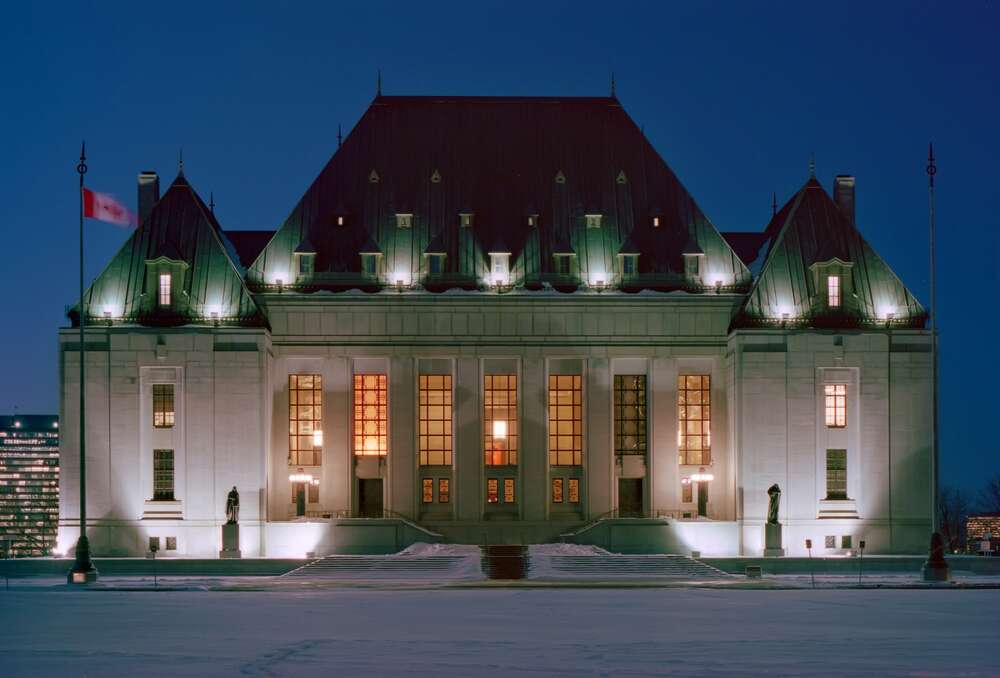You can read Part One of Aboriginal Rights as a Tool of Colonialism here.
The Constitution Act, 1982 held the promise of a new day for the recognition of Indigenous rights. Section 35 recognized and affirmed the existing Aboriginal and treaty rights of Aboriginal people. But when the Supreme Court began its consideration of what exactly the section 35 promise amounted to, it did not recognize Indigenous Peoples as nations with legal rights rooted in their own legal orders and lifeworlds. The Court viewed section 35 as an empty box. The Court's task was to fill the box, not with the pre-existing legal rights of Indigenous nations, but with 'Aboriginal rights'.

Photo Credit: Kelly Sikkema (License)
The Court decided Aboriginal rights were to be based on activities integral to an Indigenous nation's 'distinctive culture'. What is integral and distinctive would be decided by Canadian judges (a small group of professionally ambitious, almost exclusively non-Indigenous people selected by the federal government). Section 35 rights are rooted in practices that existed before the arrival of the colonizers.
The Court imposed this limitation to ensure Aboriginal rights are not contaminated by the influence of settlers and the modern technology and economic practices they carried with them. Like museum curators, Canadian judges were to evaluate the historical record in search of evidence of pre-contact Indigenous practices, customs and traditions sufficiently distinctive from the world of the civilized Europeans to qualify as the basis for an Aboriginal right.
The Supreme Court understood it was opening itself up to criticism. How could it justify its narrow view of Aboriginal rights? The answer was simple--Aboriginal rights are not equal to the rights of non-Indigenous people because they are by definition 'Aboriginal'.
Section 35, according to the Court, is intended to protect the 'Aboriginal' in Aboriginal people, their Indigeneity, the 'Indian qua Indian'. On this view, section 35 was never intended to recognize and affirm the legal rights of Indigenous people on an equal footing with non-Indigenous people. Instead, like a museum diorama, it was to contain and identify the essentialness of what made Indigenous people different and separate from the modern world of the colonizers.
Identifying and dissecting essentialized Indians was just the beginning. To ensure the stability and legitimacy of the dominant, colonizer society, the Court went further. It declared that potential Aboriginal rights must pass a translation test. If they are not understandable and compatible with the colonizers’ common law, they do not exist--they are lost in translation. They must be rejected either because they are incompatible with stereotypes of Indigenous people, or because they pose a threat to colonizer dominance and wealth.
Despite these restrictions, there is still the possibility ingenious Indigenous people might find a way to use Aboriginal rights to bootstrap their way into mainstream Canadian economy. This would not only pose a threat to non-Indigenous dominance and entitlement, it would be contrary to the Court's definition of reconciliation: Crown sovereignty cannot be challenged and the existing expropriation of Indigenous land and resources must be accepted--after all, as former Chief Justice Lamer famously declared in the Delgamuukw/Gisday’way decision–we are all here to stay.
The Court answered this threat by declaring that Aboriginal rights, as narrow and limited as they are, are further diminished by an inherent limit. For Aboriginal rights with an economic component, for example commercial fishing, the right cannot result in more than a moderate livelihood for Indigenous people.
For Aboriginal title, Indigenous Peoples' use and enjoyment of their lands are limited by their 'aboriginality' (their distinct relationship to the land that was the basis for establishing Aboriginal title) as well as a prohibition on using their lands in such a way that would deny future generations the use and enjoyment of their lands.
This inherent limit is a one-way street. It prevents Indigenous people from using their lands equal to how non-Indigenous people use and benefit from lands and resources--it stops Indigenous people from stepping out of the diorama. But it does not impose a similar limit on colonizers displacing Indigenous people from their land.

Photo Credit: Nick Tiemeyer (License)
Canadian law does not interfere with the federal government disentitling future generations of Indigenous people through a surrender of lands based on a vote of 50 percent plus one of status Indians who vote on a particular day. This is despite the fact that a vote by registered Indian Act band members is limited to a fraction of the members of an Indigenous nation and based on sexist, racist membership criteria imposed by the federal government.
Canadian law abandons principle and turns a blind eye to hypocrisy as long as the reconciliation objective is achieved: extinguishing Indigenous rights in the name of certainty for modern-day colonizers.
Even given these limitations, the Court took the additional step of putting in place a colonizer insurance policy against any unpredictable development that would threaten the overarching objective of removing Indigenous people from their lands. The Court held that section 35's protection of Aboriginal rights is not guaranteed. Constitutional protection can be dispensed with should an Aboriginal right threaten the interests of the dominant society. The Court subsequently extended the power to override Aboriginal rights to provincial governments.
The overall effect has been to not only turn section 35 into a box intended to hold no more than a handful of Aboriginal rights (primarily subsistence harvesting rights and, perhaps, limited economic rights)--it has also resulted in federal and provincial governments having a key to the box so they can ransack it as needed in the name of reconciliation.
The capstone of the Court's work on section 35 was its explanation of why rights protected under section 35 are so far removed from Indigenous Peoples' understandings of their rights and from the rights of non-Indigenous people. As a tool of colonization, the Court's answer was simple, effective and unanswerable--Aboriginal rights are 'sui generis', a fancy lawyer term meaning they are in a class of their own. Like exhibits in a museum, Aboriginal rights are separate and distinct from non-Indigenous rights, they are the other.
Tomorrow, in Part Three of this essay, I explain how the Supreme Court of Canada’s interpretation of section 35 fits into a wider colonizer project of oppressing Indigenous people through creating and recreating ‘the other’.

Bruce McIvor, lawyer and historian, is partner at First Peoples Law LLP. He is also an Adjunct Professor at the University of British Columbia’s Allard School of Law where he teaches the constitutional law of Aboriginal and Treaty rights. A member of the bar in British Columbia and Ontario, Bruce is recognized nationally and internationally as a leading practitioner of Aboriginal law in Canada. Bruce's ancestors took Métis scrip at Red River in Manitoba. He holds a law degree, a Ph.D. in Aboriginal and environmental history, is a Fulbright Scholar and author of Standoff: Why Reconciliation Fails Indigenous People and How to Fix It. He is a member of the Manitoba Métis Federation.
Follow Bruce on LinkedIn and Twitter
First Peoples Law LLP is a law firm dedicated to defending and advancing the rights of Indigenous Peoples. We work exclusively with Indigenous Peoples to defend their inherent and constitutionally protected title, rights and Treaty rights, uphold their Indigenous laws and governance and ensure economic prosperity for their current and future generations.
For more First Peoples Law analysis, visit our blog
Sign up for our First Peoples Law Report
